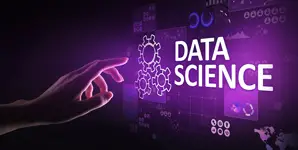Data Scientist Jobs
1. What is Data Science?
To unlock valuable insights hidden within an organization's data, data science blends specialized programming, advanced analytics, artificial intelligence (AI), machine learning, and mathematical/statistical techniques with domain knowledge. These insights can inform strategic planning and decision-making processes.
The rapid increase in data sources and volume has propelled data science to become one of the most rapidly expanding fields across all industries. It's no wonder that the position of data scientist was coined the 'sexiest job of the 21st century' by Harvard Business Review. Organizations now heavily rely on these professionals to analyze data and offer actionable insights to enhance business performance.
The data science lifecycle involves several stages, each with distinct roles, tools, and processes for extracting actionable insights:
-
Data collection: Gathering raw structured and unstructured data from various sources using methods like manual entry, web scraping, and real-time streaming from systems and devices.
-
Data storage and processing: Managing data storage and structure, including cleaning, deduplicating, transforming, and integrating data using ETL (extract, transform, load) jobs or similar technologies. This stage ensures data quality before loading into repositories like data warehouses or data lakes.
-
Data analysis: Conducting exploratory data analysis to identify patterns, biases, and distributions within the data. This analysis informs hypothesis generation for testing and drives predictive analytics, machine learning, and deep learning modeling efforts.
-
Communication: Presenting insights through reports and data visualizations to aid understanding and decision-making by business analysts and stakeholders. Visualization tools or programming languages like R or Python are used to create these visualizations.
Each stage contributes to extracting valuable insights and facilitating informed decision-making within organizations.

2. Who are Data Scientists?
Data scientists are not always directly accountable for every step in the data science lifecycle. For instance, data pipelines are typically managed by data engineers, although data scientists may offer input on the types of data needed. While data scientists can create machine learning models, expanding these efforts requires additional software engineering expertise to enhance program efficiency. Therefore, collaboration with machine learning engineers is often necessary to scale machine learning models effectively.
Data scientist roles may overlap with those of data analysts, particularly in tasks like exploratory data analysis and data visualization. However, data scientists generally possess a broader skillset than the average data analyst. They commonly utilize programming languages like R and Python for statistical inference and data visualization.
To fulfill these responsibilities, data scientists need computer science and scientific skills that extend beyond those of traditional business or data analysts. Additionally, they must comprehend industry-specific knowledge, such as automotive manufacturing, eCommerce, or healthcare.
3. What do Data Scientists do?
Now that we have a better idea of how a data scientist works, let's examine their general duties.
-
Gathering and refining data: from various sources, exploring patterns and connections among variables to uncover trends or correlations. They refine data within spreadsheets, structure data into Python data frames, and use statistical packages in R for analysis.
-
Constructing predictive models: After organizing data, data scientists create predictive models using machine learning algorithms to forecast trends or outcomes. They build basic clustering models in Tableau, utilize machine learning algorithms in Apache Spark, and enhance existing analytics platforms with functionalities like natural language processing and AI-driven recommendation systems.
-
Generating data visualizations: to aid end-users in comprehending insights. They share charts via Streamlit dashboard applications, construct Tableau dashboards, and generate graphs in Jupyter Notebooks for team collaboration.
-
Designing algorithms: Using programming languages like Python, they devise algorithms to automate tasks such as data refinement and model selection, streamlining operations, and enhancing organizational efficiency.
-
Simplifying technical concepts: translate complex analysis results into easily understandable language for non-technical audiences, ensuring effective communication of insights.

4. Which skills are important to Data Scientists?
These are skills you will undoubtedly need to acquire as you start your career as a data scientist:
-
Coding Skills: proficiency in programming languages like Python or R is crucial for data scientists to handle and analyze extensive datasets, commonly known as 'big data.' It's essential to grasp fundamental data science principles and start acquainting yourself with Python usage.
-
Statistical Analysis: to craft effective machine-learning models and algorithms. Mastery of statistical concepts, such as linear regression, is crucial for machine learning tasks. Understanding statistical measures is essential for collecting, interpreting, organizing, and presenting data.
-
Data Handling and Database Management: Data wrangling involves cleaning and organizing intricate datasets for easier analysis. This includes sorting data by patterns, correcting values, and categorizing information to facilitate data-driven decisions. Additionally, understanding database management is crucial for extracting data from diverse sources, transforming it into query-friendly formats, and loading it into data warehouse systems.
-
Machine learning and deep learning: enhance the ability to analyze data effectively and anticipate future trends. For instance, they can predict future client numbers based on past data using techniques such as linear regression.
-
Data visualization: Proficient visualization skills enable effective communication of business insights to stakeholders. Acquaint with the following tools for success in this area.
-
Cloud computing: analyze and visualize data stored in cloud platforms. Certifications such as Amazon Web Services (AWS), Microsoft Azure, and Google Cloud are tailored to these cloud services, granting access to databases and frameworks crucial for technological advancement across industries.
-
Interpersonal skills: like communication are crucial for data scientists. Effective communication fosters strong relationships within teams and facilitates presenting findings to stakeholders. Just as data visualization communicates insights, successful collaboration is key.









